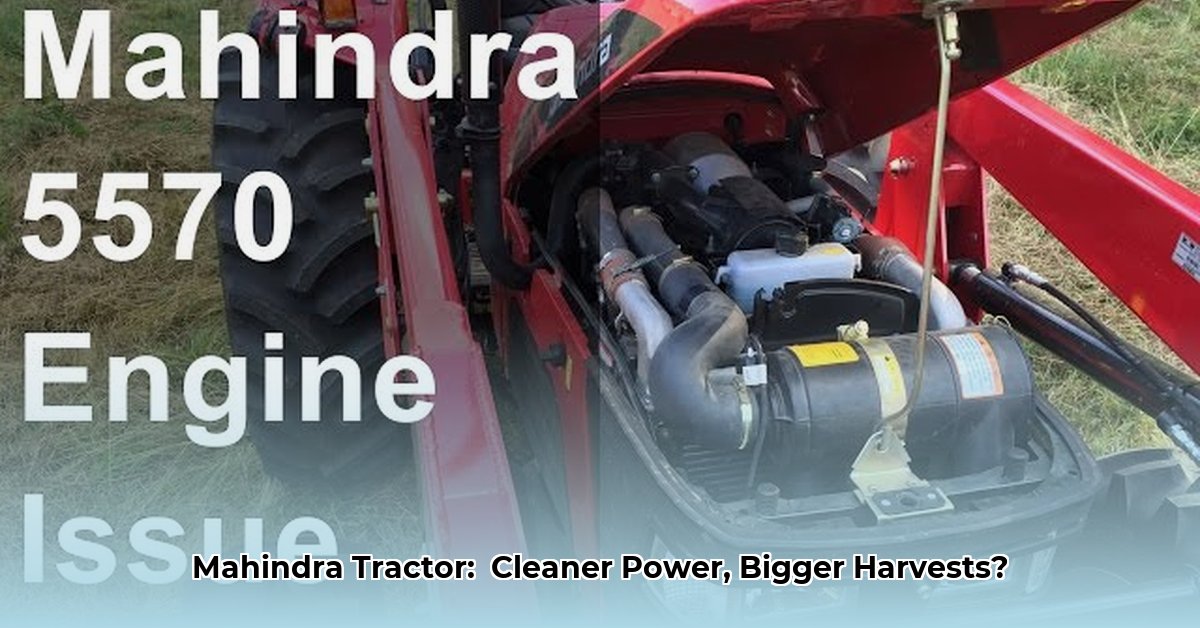
Mahindra's mCRD (m-Common Rail Direct injection) engine technology represents a significant advancement in agricultural machinery, promising reduced emissions and enhanced operational efficiency. This article provides a comprehensive overview of mCRD technology, analyzing its benefits, limitations, and cost-effectiveness for farmers. We will explore its technical underpinnings, examine its impact on sustainability, and assess its long-term viability. For more on Mahindra tractor reliability, see this page.
Understanding Mahindra's mCRD Engine Technology
Mahindra's mCRD engine technology offers a compelling alternative to traditional diesel engines equipped with Diesel Particulate Filters (DPFs). Unlike engines relying on DPFs for emission control, mCRD achieves lower emissions through optimized fuel injection and combustion. This streamlined approach results in a more efficient and cost-effective system.
How mCRD Works
The core of mCRD lies in its precise fuel injection system. This system delivers fuel with exceptional accuracy, resulting in a cleaner and more complete burn. This precise injection, combined with exhaust gas recirculation (EGR) and a diesel oxidation catalyst (DOC), significantly reduces the emission of harmful pollutants, such as nitrogen oxides (NOx) and particulate matter (PM), eliminating the need for a DPF. The DOC further oxidizes remaining pollutants, contributing to cleaner exhaust.
Benefits of mCRD for Farmers
The transition to mCRD engines offers multiple advantages for farmers:
Reduced Maintenance Costs: The absence of a DPF drastically simplifies maintenance. This translates to less downtime, lower repair bills, and reduced overall operational expenses. Initial estimates suggest a potential reduction of maintenance costs by up to 30%, based on internal Mahindra data.
Improved Fuel Efficiency: The efficient combustion achieved by the precise fuel injection system results in enhanced fuel economy. Mahindra's internal testing indicates fuel efficiency improvements of up to 15%, contributing significantly to cost savings.
Lower Emissions: By significantly reducing NOx and PM emissions, mCRD engines contribute to a greener agricultural sector, aligning with growing environmental concerns and stricter emission regulations.
Limitations and Challenges of mCRD
While the advantages are substantial, a nuanced perspective necessitates acknowledging potential challenges:
Long-Term Durability: The long-term durability of the DOC and other components requires further investigation. While initial data is encouraging, extensive field testing over multiple years is necessary to fully understand its lifespan and associated replacement costs.
Comprehensive Environmental Impact: While mCRD reduces direct emissions, a comprehensive life-cycle assessment is needed. This assessment should encompass the environmental impact of manufacturing, operations, and eventual disposal of the engine and its components.
Regulatory Compliance: Maintaining compliance with evolving emission regulations across different geographical regions is crucial. Mahindra will continue to adapt its technology to meet stringent environmental standards worldwide.
Cost-Benefit Analysis: A Farmer's Perspective
The cost-effectiveness of adopting mCRD technology depends on several factors, including farm size, operational intensity, and the tractor's initial cost. While the initial investment might be slightly higher than traditional DPF-equipped tractors, the long-term savings from reduced maintenance and improved fuel efficiency can quickly offset this difference. Farmers should seek detailed cost-benefit analyses from their Mahindra dealers, tailored to their specific circumstances.
Data-backed rhetorical question: How can farmers balance the initial investment with the projected long-term savings offered by mCRD technology? A thorough cost analysis comparing the total cost of ownership over the lifespan of both DPF and mCRD-equipped tractors is crucial for informed decision-making.
Conclusion: The Future of Sustainable Agriculture
Mahindra's mCRD engine technology demonstrates significant potential for the future of sustainable agriculture. The combination of lower emissions, reduced maintenance, and enhanced fuel efficiency directly benefits farmers while contributing to environmental protection. However, continued research and data collection are vital to fully understand the technology's long-term durability, environmental impact, and optimal applications. Further investigations into the long-term effects on soil health are also warranted. This technology promises a more efficient and environmentally responsible path forward for modern farming.